Discover 5 Animals that Eat Honey
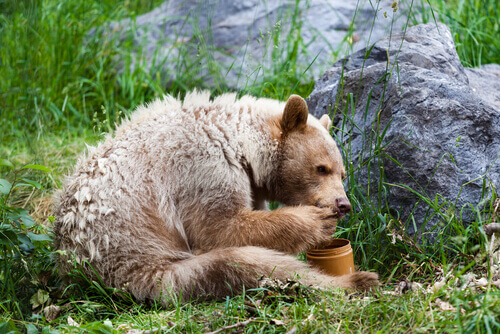
This delicious product that bees make to feed the whole hive is also a favorite food for other species who’ll do whatever it takes to get it. Would you like to know which animals eat honey? Bears aren’t the only ones!
Examples of animals that eat honey
Honey is a sweet, delicious product that we can add to an infusion or a dessert and it’s also quite appreciated in nature as well. Once bees make it, other species become desperate to consume this golden elixir. Some of the animals that eat honey are:
1. The grizzly bear
This is the first example that comes to mind when we think of an animal eating honey. The grizzly bear, which appears in this article’s cover photo, eats an omnivorous diet that can change according to the time of the year.
At the end of summer is when they simply ‘plunder’ beehives. And not only do they devour the honey, but also the larvae and bees inside. Their appetite is really voracious because, in a few weeks, they have to hibernate (or go to sleep) for the entire winter. And that’s why they need to gain weight fast!
2. The honeyguide
The birds in the honeyguide family are also known as honey birds or indicator birds, and one of their main foods is the nectar produced by bees. They can be found in Asia and Africa and are famous for their interaction with humans. These birds are small, have dark feathers, and a very dexterous short, thin beak.
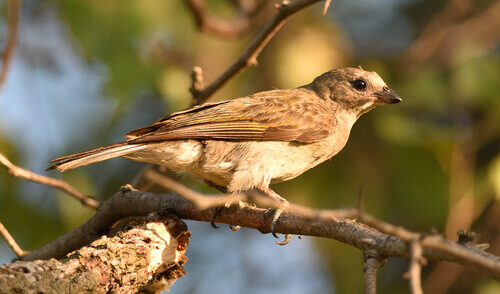
Any time of the year, they can easily head to beehives to feast on honey, larvae, wax, and royal jelly. They complete their diet with silkworms, spiders, fruit, and small insects.
3. The honey badger
It’s said that the honeyguide birds show badgers – and some people – the way to the bee colonies. Why? Because they need a helper to open the hive for them.
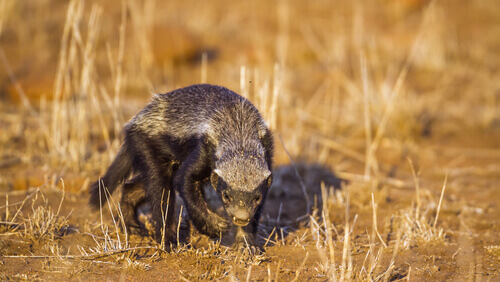
That’s where the third honey-eating animal on this list comes in. The honey badger is a carnivore from the Middle East, Africa, and India with a robust, elongated body and digging claws.
Although the honey badger feeds on carrion, rodents, birds, small antelopes, lizards, frogs, and invertebrates, and sometimes even berries and roots, it loves the sweet golden nectar produced by bees. It destroys hives in such a way that it’s a threat to beekeepers.
4. The small hive beetle
This insect likes honey so much that it lays its eggs in beehives for its larvae to feed on. This is why it’s become a pest. Endemic to sub-Saharan Africa, the small beetle has spread to other countries such as the United States, the Philippines, and Australia.
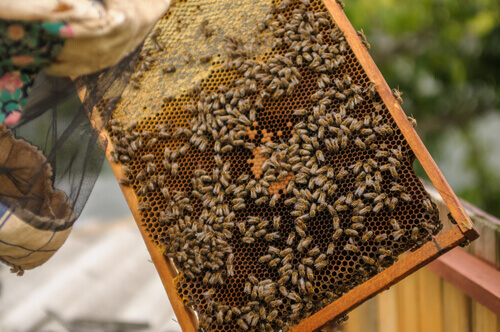
If a specimen lays its eggs in the colony, and if the bees aren’t strong enough, the larvae can consume all the stored honey and pollen, which would be the end of the hive. This is why beekeepers fight tirelessly against this small, dark brown, quarter-inch-long beetle, which lives for no more than six months, but whose damage to production is irreparable.
5. The marten
Finally, another carnivorous mammal that, while it may have an adorable face, is quite dangerous. It’s a medium-sized nocturnal predator that lives in southern and central Europe, as well as in Southeast Asia and near the Himalayas.
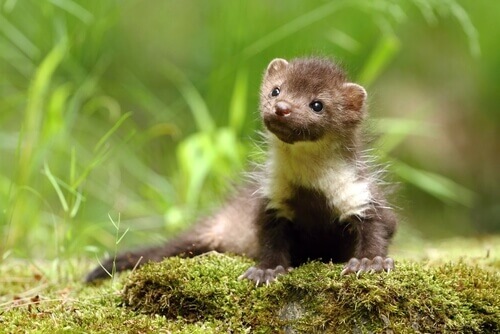
The marten feeds on small mammals and rodents, amphibians, insects, fruits, eggs, and honey. To obtain food, it can walk quite a bit within its own territory. Males define their property between 1 and 6 miles in diameter, in which they have a burrow between rocks or trees.